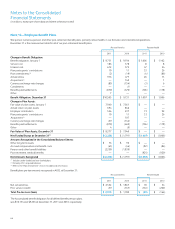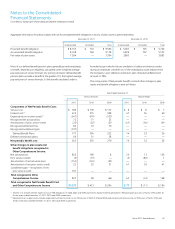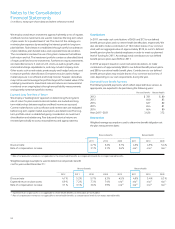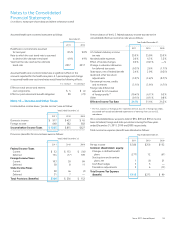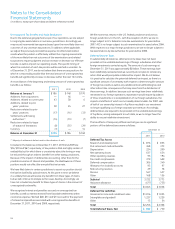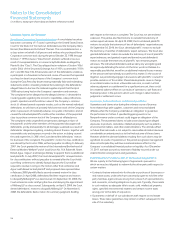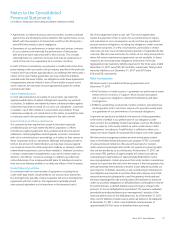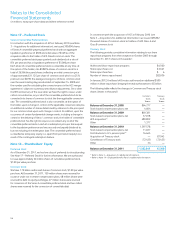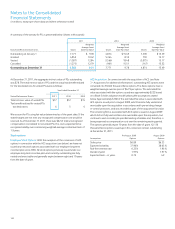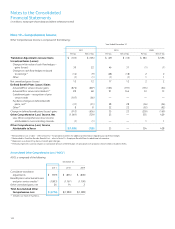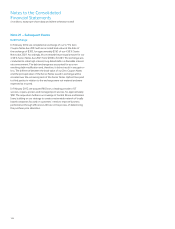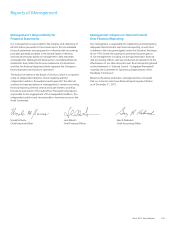Xerox 2011 Annual Report Download - page 97
Download and view the complete annual report
Please find page 97 of the 2011 Xerox annual report below. You can navigate through the pages in the report by either clicking on the pages listed below, or by using the keyword search tool below to find specific information within the annual report.95Xerox 2011 Annual Report
and contract labor for the equivalent payment of all social security and
other related labor benefits, as well as consequential tax claims, as if they
were regular employees. As of December 31, 2011, the total amounts
related to the unreserved portion of the tax and labor contingencies,
inclusive of related interest, amounted to approximately $1,120 with
the decrease from December 31, 2010 balance of approximately
$1,274, primarily related to currency and adjustments from closed cases
partially offset by interest and new cases. With respect to the unreserved
balance of $1,120, the majority has been assessed by management as
being remote as to the likelihood of ultimately resulting in a loss to the
Company. In connection with the above proceedings, customary local
regulations may require us to make escrow cash deposits or post other
security of up to half of the total amount in dispute. As of December 31,
2011 we had $240 of escrow cash deposits for matters we are disputing,
and there are liens on certain Brazilian assets with a net book value of
$16 and additional letters of credit of approximately $237, which include
associated indexation. Generally, any escrowed amounts would be
refundable and any liens would be removed to the extent the matters are
resolved in our favor. We routinely assess all these matters as to probability
of ultimately incurring a liability against our Brazilian operations and
record our best estimate of the ultimate loss in situations where we assess
the likelihood of an ultimate loss as probable.
Legal Matters
As more fully discussed below, we are involved in a variety of claims,
lawsuits, investigations and proceedings concerning securities law,
intellectual property law, environmental law, employment law and the
Employee Retirement Income Security Act (“ERISA”). We determine
whether an estimated loss from a contingency should be accrued by
assessing whether a loss is deemed probable and can be reasonably
estimated. We assess our potential liability by analyzing our litigation
and regulatory matters using available information. We develop our
views on estimated losses in consultation with outside counsel handling
our defense in these matters, which involves an analysis of potential
results, assuming a combination of litigation and settlement strategies.
Should developments in any of these matters cause a change in our
determination as to an unfavorable outcome and result in the need to
recognize a material accrual, or should any of these matters result in a
final adverse judgment or be settled for significant amounts, they could
have a material adverse effect on our results of operations, cash flows
and financial position in the period or periods in which such change in
determination, judgment or settlement occurs.
The above amounts are classified as current or long-term in the
Consolidated Balance Sheets in accordance with the asset or liability to
which they relate or, when applicable, based on the expected timing of
the reversal. Current deferred tax assets at December 31, 2011 and 2010
amounted to $229 and $298, respectively.
The deferred tax assets for the respective periods were assessed for
recoverability and, where applicable, a valuation allowance was recorded
to reduce the total deferred tax asset to an amount that will, more likely
than not, be realized in the future. The net change in the total valuation
allowance for the years ended December 31, 2011 and 2010 was a
decrease of $58 and an increase of $63, respectively. The valuation
allowance relates primarily to certain net operating loss carryforwards,
tax credit carryforwards and deductible temporary differences for which
we have concluded it is more likely than not that these items will not be
realized in the ordinary course of operations.
Although realization is not assured, we have concluded that it is more likely
than not that the deferred tax assets, for which a valuation allowance
was determined to be unnecessary, will be realized in the ordinary course
of operations based on the available positive and negative evidence,
including scheduling of deferred tax liabilities and projected income from
operating activities. The amount of the net deferred tax assets considered
realizable, however, could be reduced in the near term if actual future
income or income tax rates are lower than estimated, or if there are
differences in the timing or amount of future reversals of existing taxable
or deductible temporary differences.
At December 31, 2011, we had tax credit carryforwards of $379 available
to offset future income taxes, of which $102 are available to carry forward
indefinitely while the remaining $277 will expire 2012 through 2028 if
not utilized. We also had net operating loss carryforwards for income tax
purposes of $1.1 billion that will expire 2012 through 2032, if not utilized,
and $2.5 billion available to offset future taxable income indefinitely.
Note 16 – Contingencies and Litigation
Brazil Tax and Labor Contingencies
Our Brazilian operations are involved in various litigation matters and have
received or been the subject of numerous governmental assessments
related to indirect and other taxes, as well as disputes associated with
former employees and contract labor. The tax matters, which comprise a
significant portion of the total contingencies, principally relate to claims
for taxes on the internal transfer of inventory, municipal service taxes
on rentals and gross revenue taxes. We are disputing these tax matters
and intend to vigorously defend our positions. Based on the opinion of
legal counsel and current reserves for those matters deemed probable of
loss, we do not believe that the ultimate resolution of these matters will
materially impact our results of operations, financial position or cash flows.
The labor matters principally relate to claims made by former employees
Notes to the Consolidated
Financial Statements
(in millions, except per-share data and where otherwise noted)



